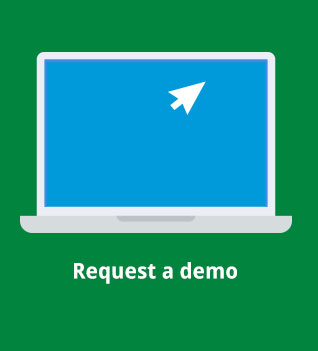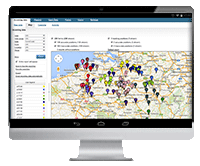The term mobility has and always will describe the logistics industry. Whether it’s freight trucks transporting consumer goods across America or truck drivers traversing through multiple European nations with supplies for a manufacturer, this sector is always moving.
In fact, workflows and procedures are the only aspects of logistics that are not keeping pace with the industry as a whole. Paper-based processes plague trucking and transport. Not only do drivers need to manage stacks of CMRs, manually note deliveries and submit documents in person, but cumbersome administrative tasks bog down the productivity of companies and their staff members.
However, thanks to modern day conveniences such as touch-screen smartphones, 4G connectivity and accompanying mobile apps, the logistics industry recently received a facelift. Mobile workflow solutions have truly revolutionized trucking and transport, but not all businesses hopped on this bandwagon immediately. After all, driving trucks and smartphones usage are not commonly associated with one another, and logistics companies usually lack the IT infrastructure to make mobile apps in house. Achieving always-on connectivity seems like a feat even for an experienced team of app developers.
While those fears are very real, it’s time for logistics to fully embrace the 21st century with mobile workflow apps. So many of truck drivers’ daily tasks are easily portable to mobile solutions, including proof of delivering reporting, task management, navigation, vehicle inspections and much more. In fact, a report from Intermec found that mobile technologies can save logistics and transport companies around £303,855 – or $471,400 – per year.
But what exactly improves with mobile workflow apps, 4G networks and RFID chips? Let’s take a look at some common tasks in the logistics industry and how mobile solutions from Mobilengine are re-inventing this sector and allowing truck drivers to embrace enterprise mobility.
Delivery reporting
Without mobile workflow apps, truck drivers typically spend six to eight weeks on the road, dropping off deliveries and collecting CMR documents. At the end of their journeys, those employees bring their stacks of paperwork to administrators at headquarters and the payment process begins there. This is archaic, time-consuming and unnecessarily complex.
Mobile proof of delivery or CMR photo apps not only impact drivers’ productivity, but they help logistics companies collect payments quicker. With a simple mobile workflow app from Mobilengine, employees can easily collect customer signatures, take photographs of CMR documents and immediately share that information with headquarters. Drivers become more productive, sending along invoices with the touch of a screen, and administrators can start processing payments as soon as a delivery occurs. In an industry where companies only earn around 4.8 cents in profit for every 95 cents spent – according to The Truckers Report – any operational improvement counts.
Inspections
The logistics industry is rife with rules and regulations, but companies accept these responsibilities because they can keep their drivers safe from harm. However, constantly inspecting vehicles is a time-consuming process, and when it is based on paper workflows, errors in documentation appear and repairs take longer than expected.
 Don’t let truck drivers hit the road without a navigation-integrated mobile app to guide their way through towns and tasks.
Don’t let truck drivers hit the road without a navigation-integrated mobile app to guide their way through towns and tasks.With NFC or RFID technology and vehicle inspection apps, those old paper-based data collection methods are replaced by easy-to-use smartphone and tablet interfaces. Technicians can either detail vehicle conditions with comments and checklists or create databases by scanning NFC or RFID chips on tires, mirrors and other equipment. The benefits of vehicle inspection apps are vast, with Logistics Management citing Auburn University research that found RFID decreases inspection costs, enables an inventory accuracy of at least 95 percent and even increases margins.
Routing
Last but not least, mobile workflow apps also help improve driving. According to The Truckers Report, it costs a logistics company about $1.73 per mile, which equates to $83.63 in spending every hour that a truck is on the road. Simply put, finding the best routes and ensuring that drivers stick to those directions can positively impact the bottom line.
Logistics and transportation companies are turning to navigation-integrated workflow apps to improve routing and keep drivers on those paths. Whether an organization gives its employees turn-by-turn directions or simply tracks the whereabouts of vehicles, administrators have a comprehensive understanding of when deliveries are made, fuel consumption and any other critical metrics.
Trucking and mobility go hand in hand, but without a complete mobile workflow management solution and platform, drivers and administrators won’t have the tools to become more efficient at their jobs. At a time when efficient and transport are two sides of the same coin, mobile workflow apps can redefine the logistics industry as we know it.
Download our Logistics Case Study
Adam Dalnoki, Mobilengine’s CEO, brings IT and telecommunications expertise as an ex BCG consultant. He made a previous exit in a mobile payment start up and has held sales executive positions at Provimi and Kraft Foods.








